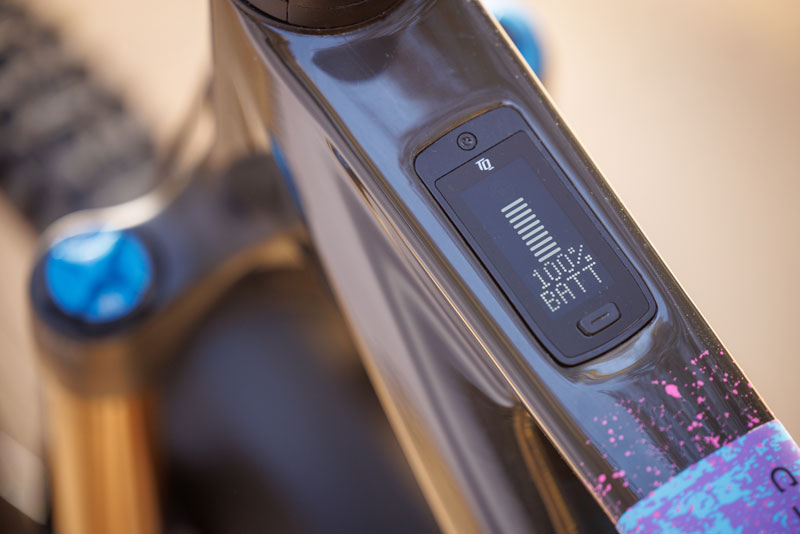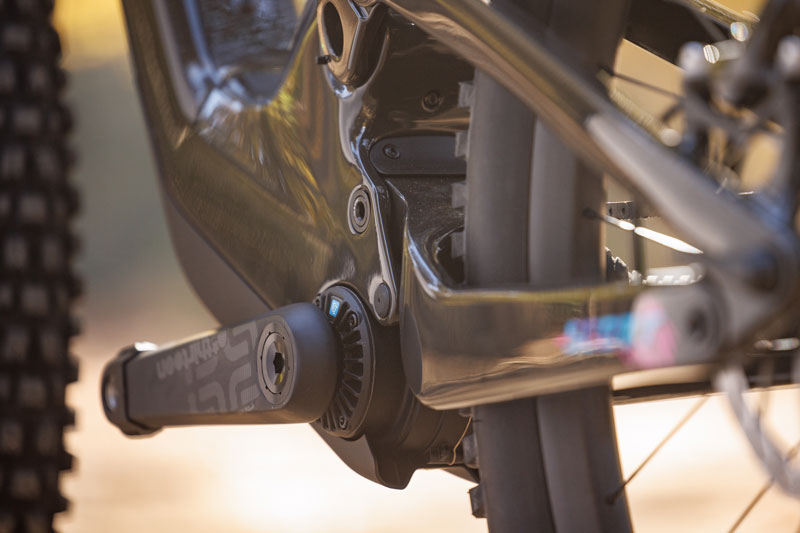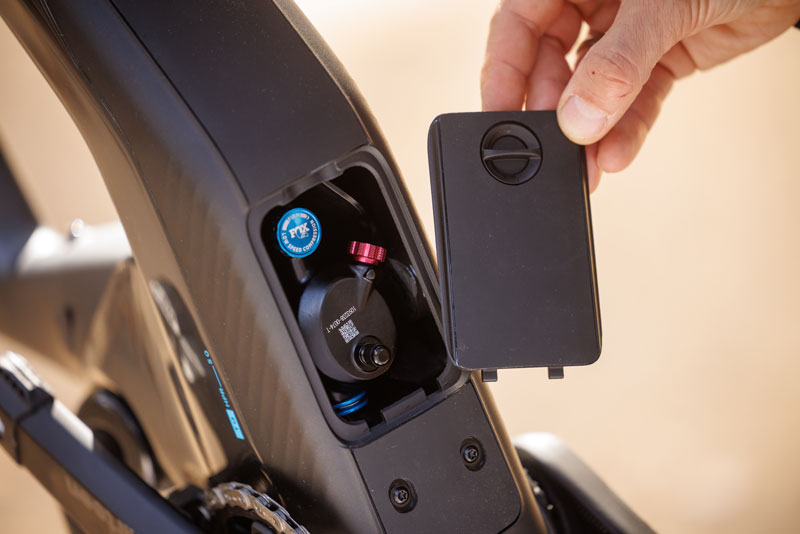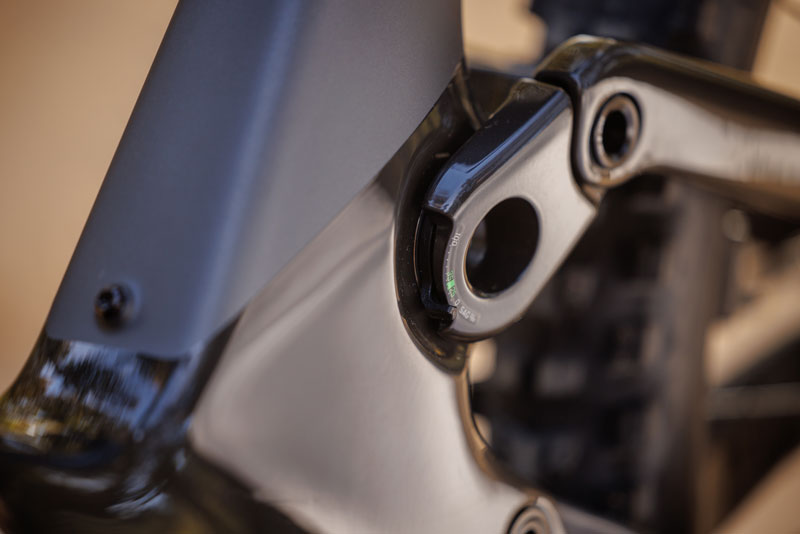
FIRST RIDE REVIEW
THE NEW SCOTT VOLTAGE ERIDE
Words by Robert Johnston | Photos by Daniel Geiger
The Voltage has been in the Scott lineup for years, serving as their freeride platform and coming in heavy-hitting full suspension variants as well as dirt jump bikes. For the latest Voltage though, Scott decided to make appropriate use of the name by using it for the latest bike in their eRide lineup. The new Scott Voltage eRide is essentially an electrified version of their Genius all mountain bike, adding a TQ HPR50 system to the Integrated Suspension Technology-equipped machine. We were able to log a solid day of testing on board Scott’s latest eMTB, so let us share our experiences.
QUICK SPECS
• 155mm Integrated Suspension Technology
• HTA 63.9
• STA 77.1 (effective)
• REACH 485 (Large)
WE DIG
WE DON’T
ABOUT THE NEW SCOTT VOLTAGE ERIDE
A Scott Voltage in 2024 now takes the form of a “Trail” eBike with a lightweight motor. Up front you’ll find a 160mm travel fork and there’s 155mm of concealed rear suspension. As standard you get a 29” wheel on both ends, with no provisions made to preserve geometry if you demand a smaller rear wheel.
DRIVE UNIT AND ELECTRONICS | Scott opted to use the lightweight and compact TQ HPR50 system to power their Voltage eRide. This is a drive unit capable of producing 50Nm Torque and up to 300W peak power, with a low weight of 1.8kg. TQ supplies an integrated 360Wh battery as standard, which can be boosted by 160Wh with the TQ range extender. Charging the system to 80% takes just two hours, letting you quickly re-juice. A neat top tube display offers black and white visuals of range, battery life, power in and out, and the mode selected. A sleek handlebar remote allows the user to toggle between power modes and use the walk function.
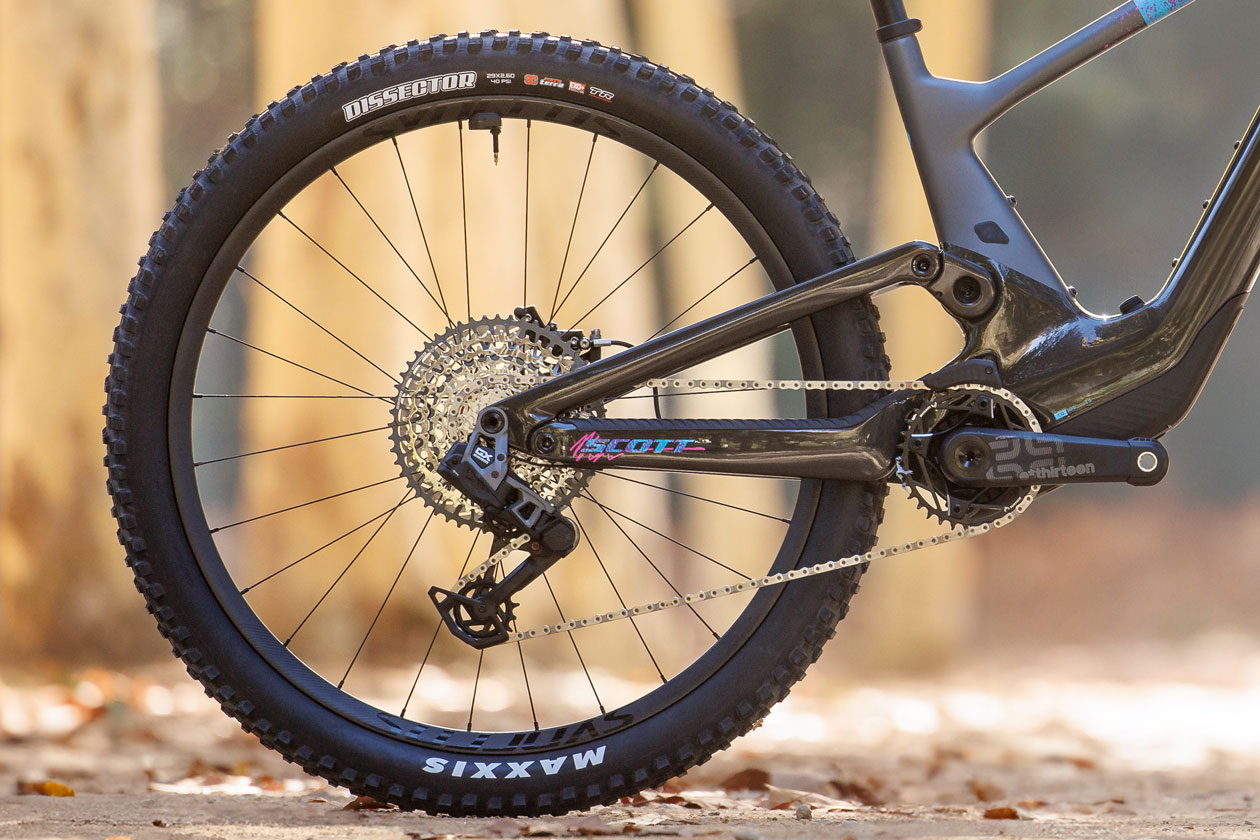
FRAME AND FEATURES | Scott is only producing a HMF Carbon Fiber frame for the new Voltage eRide. Though this is the lower of their two grades of Carbon, it still makes for a lightweight and stiff frame thanks to their engineering. To optimize the structure, Scott focused on producing a stiff path between the Head Tube, Bottom Bracket and rear axle. This allowed them to shave weight from the Seat Stays and Top Tube.
Their engineers worked to develop a linkage that would allow for ample clearance to fit the shock around the motor and battery, while maximizing performance of the rear suspension and increasing durability. They opted to use a shock extender with a small shock extender pivoting around a bearing, minimizing breakaway force.
Angle-adjustable headset cups allow for a ±0.5 degree adjustment without replacement parts, and Scott includes a neutral cup too. They focused on maximizing seatpost insertion depths, letting a size medium run a 180mm dropper post and the Large a 210mm. Within the front triangle there’s space for both the TQ Range Extender and a water bottle, or two bottles if that’s the preference.
On the downtube, there is a large plastic cover with a rubber coating to minimize noise. This features a small hatch to allow for easy access into the shock to make adjustments. Additionally, the whole cover can be unbolted to allow for easy access inside the frame for any maintenance required. Given the complexity of cable routing around the shock, Scott developed a cable channeling device to guide the cables safely around the shock and ensure noise and rub are prevented.
SUSPENSION | Integrated Suspension Technology sees the rear shock hidden out of sight on the new Voltage, as in most of their other models. They claim this to lower the Center of Gravity; improve lateral stiffness around the shock to improve suspension performance, and protect the shock from the elements to improve service life. Shock settings are easily accessed by the port in the downtube. On the outside of the rocker pivot, a sag indicator is fitted to make setup easier.
Kinematics on the Voltage eRide are similar to those found on the Genius. Leverage ratio progresses around 21% in a smooth manner. Anti Squat sits at 100% at sag in the climbing gears and rises slightly as you go down the cassette for a good blend of pedaling support and traction. It makes the TwinLoc or TracLoc levers useful to maximize efficiency. Anti Rise sits at roughly 80% at sag, giving fairly neutral braking characteristics.
Two different Fox shocks are fitted to the Voltage eRide, depending on the model purchased. The majority of models use the Fox NUDE 6T – an inline shock custom made in collaboration between Scott and Fox. Scott equips this shock and the fork with their Twinloc system, allowing for remote switching between the different modes. On the NUDE 6T you get a choice of Descend, Traction Control and Lockout modes. Traction Control closes off a chamber of the shock to reduce air volume and increase progression, and adds compression damping to both ends for a firmer pedaling platform. Lockout adds further compression damping to fork and shock to make for an ultra-efficient platform.
The 900 TUNED model tested features a Float X NUDE shock with the TracLoc system acting on the rear shock only. TracLoc offers a Ramp Control mode where the air volume is reduced (increasing progression) but no compression is added. Climb mode then adds damping to this reduced air volume to make for a more efficient setting for smoother climbs. Independent Low Speed Compression damping adjustment is offered on the rear shock to fine tune the performance. The fork is fitted with a GRIP2 damper to offer maximum adjustability.

GEOMETRY | Sharing a good chunk of the geometry with their Genius, the Voltage eRide has some solidly rounded numbers for an aggressive trail mountain bike. The Head Tube Angle is 63.9° in the Slack position. Effective Seat Tube Angles are constant at 77.1° across the size range. The BB is raised slightly from the Genius, sitting at 27mm below the axles.
For the size Large tested, Reach is 485mm long and Stack is 631mm tall. Scott extended the chainstays by 15mm to 455mm across sizes to improve climbing abilities in the steeper terrain, resulting in a lengthy wheelbase of 1285mm.
BUILD SPECS | Four unisex build specs as standard from the 920 at $6,599/£6,099 to the $12,999/£11,899 900SL. Scott also offers their Contessa models aimed at Women in the 910 and 900 specs in Europe only.
We tested the $10,999/£10,999 900 TUNED, which is a slightly more aggressive build spec than the rest thanks to its burlier shock, wheels and tire spec. Up front there’s a 160mm travel Fox 36 Factory with the four-way adjustable GRIP2 damper. In the rear you get the Float X NUDE shock with the TracLoc system.
The groupset is an all-SRAM affair, with the GX Eagle AXS T-Type Transmission including a hard-wired derailleur to the TQ system. Braking is handled by SRAM Code Silver Stealth brakes with 200mm rotors. The crank arms are provided by e*thirteen with their e*spec Race Carbon. Tires are upgraded to a 2.6” wide Maxxis Assegai and Dissector combination in EXO+ casings.
The remainder of the spec is handled by Scott’s in-house brand, Syncros. You get an integrated bar and stem combo in the form of the Hixoc iC carbon; their Duncan dropper; and a Revelstoke 1.0-30 CL wheelset.
Total bike weight is claimed to be a reasonable 18.6kg/41lbs for the size medium 900 TUNED build tested, equipped with inner tubes.
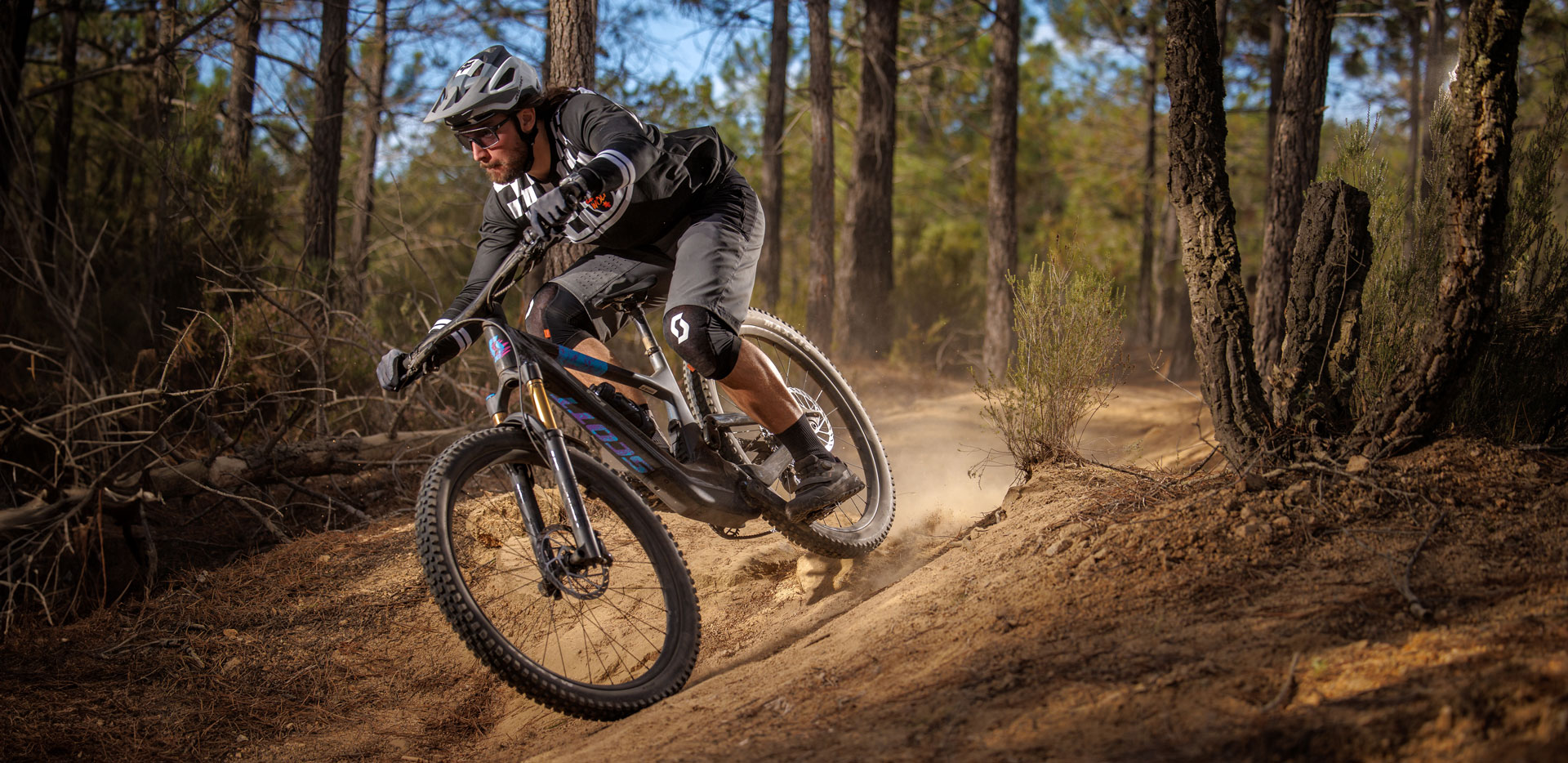
THE DIRT
I had a solid day riding the new Voltage eRide during my time with Scott in Santa Coloma De Farners, where they were also showcasing the new Ransom. The level of attention to detail and the engineering solutions we were shown along the way was very impressive. It’s safe to say the resulting product is quite exceptional in respect to its integration and the way that the details are covered. Fitting the Range Extender and a full size water bottle inside the front triangle is impressive; the lines are barely any more bulky than the Genius; and within the frame they’ve thought of many solutions to make the best use of the space within.
SETUP | Getting on the bike, the initial impressions are of a very similar feeling to Genius in the suspension and fit. As with the Genius, I found great benefit to the feel of the rear end by opting to run it at 35% sag on the indicator, which is 35% at the rear wheel. This is more like 30% sag at the shock shaft, which makes a lot of sense as this is the usual route you’d take when setting up a more conventional design. With this level of sag, I was sat into the bike in a more comfortable and confident way. It eked out considerable improvements to comfort and stability when descending.

CLIMBING | The only factor that really separates the Voltage eRide and Genius in their feeling on the trail – aside from a slight increase in calmness of the handling as a result of the weight of motor and battery – is the length of the rear end. It took me all of 2 minutes climbing to figure that Scott had added some length to the chainstay. The front wheel stayed firmly planted on a particularly steep pitch, much to my surprise. Scott’s new SL eMTB allowed the TQ motor’s power to be delivered very effectively, both in terms of its firm pedaling platform and the stellar seated geometry. The rear end length is only part of this equation, but its increased length undoubtedly improves the performance of this machine going up most terrain. It gives the impression of being on a very lightweight hill climb motorbike. Maybe with a little less power though…the TQ HPR50 system isn’t the punchiest. What it lacks in noise produced, it also lacks in grunt when the terrain gets steep. But its natural feeling and low weight give plenty to like if you’re not a Clydesdale or trying to ascend the gnarliest of climbs.
Both myself and a fellow relatively heavy tester noted that after a rather long mid-grade climb, the power of the TQ was throttled significantly. Speaking with a TQ employee, this was a deliberate function of the system in order to keep the heat of the outer casing of the motor below a legislated maximum, for safety reasons. It was disappointing to feel the effects of this as lighter riders disappeared into the distance with the full power still being delivered, but circumstances were reasonably extreme.
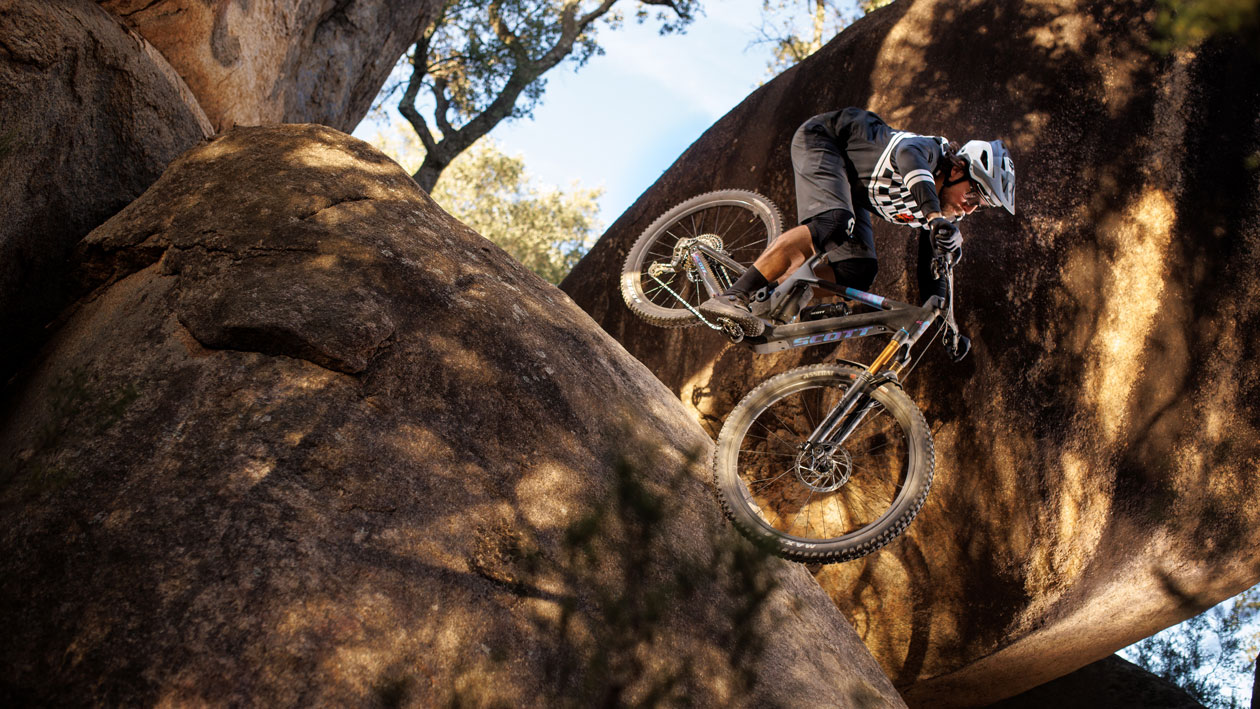
DESCENDING | The “hill climb champion” feeling did leave its mark on the descents, and was the first of my minor complaints with this bike. The front end was heavier in feel than I’d have liked, leading to a few instances – especially early on – where I was pitched forward on technical low-speed drops. Some more time on the Voltage eRide reduced the likelihood of this, with a slightly different technique and timing preventing it. Similarly, playful riding suffered a little, with a significant “yank” on the bars required to get the front wheel airborne for manuals and wheelies. I like manuals and wheelies a lot, and while they’re far from impossible on this new machine, the freeride heritage of the Voltage didn’t shine through quite as strongly as I’d hoped.
It’s not all gloomy though, and the sun shines on the Voltage eRide in different ways. Given its slack head tube angle, there’s still a healthy amount of weight on the front wheel, helping to increase traction. This trait was much appreciated in the very dry and loose terrain of Santa Coloma De Farners. Its benefit was only truly highlighted upon hopping on the new Ransom the next day, immediately highlighting how easy it is to push the front wheel if you’re not actively loading the front wheel in this terrain. Lots of weight naturally pressing on the front wheel lets you relax a little more in flatter turns, and generally requires less conscious thinking to stay on the bike – especially appreciated on unfamiliar terrain. The stability is notable at speed, and you really feel like you can open up the taps and work the bike hard through rough terrain, more so than Scott’s “trail eMTB” designation may lead you to believe.
Pushing as hard as the Voltage eRide encouraged highlighted my second minor complaint as an aggressive 98kg (220lbs) rider. The stiffness of the overall handling package is not particularly high. Whether it was the frame and fork; the Revelstoke 1.0 carbon wheels with 28 straight pull spokes; or the thin casing 2.6” tires – or a combination of all three – I’m unsure. Whatever the cause, there was a certain vagueness to the handling when hitting turns or off-cambers hard. The Voltage eRide had a tendency to “load up” and spring back in the opposing direction. I am an outlier in terms of weight and aggression for your typical “trail bike” rider, so I don’t imagine many will complain. However, it’s worth noting in case you’re in the same rider camp as me. As appropriate as the Voltage name is for an eBike, you should not assume that this Voltage is a bike designed for the same freeride antics as those in years past.
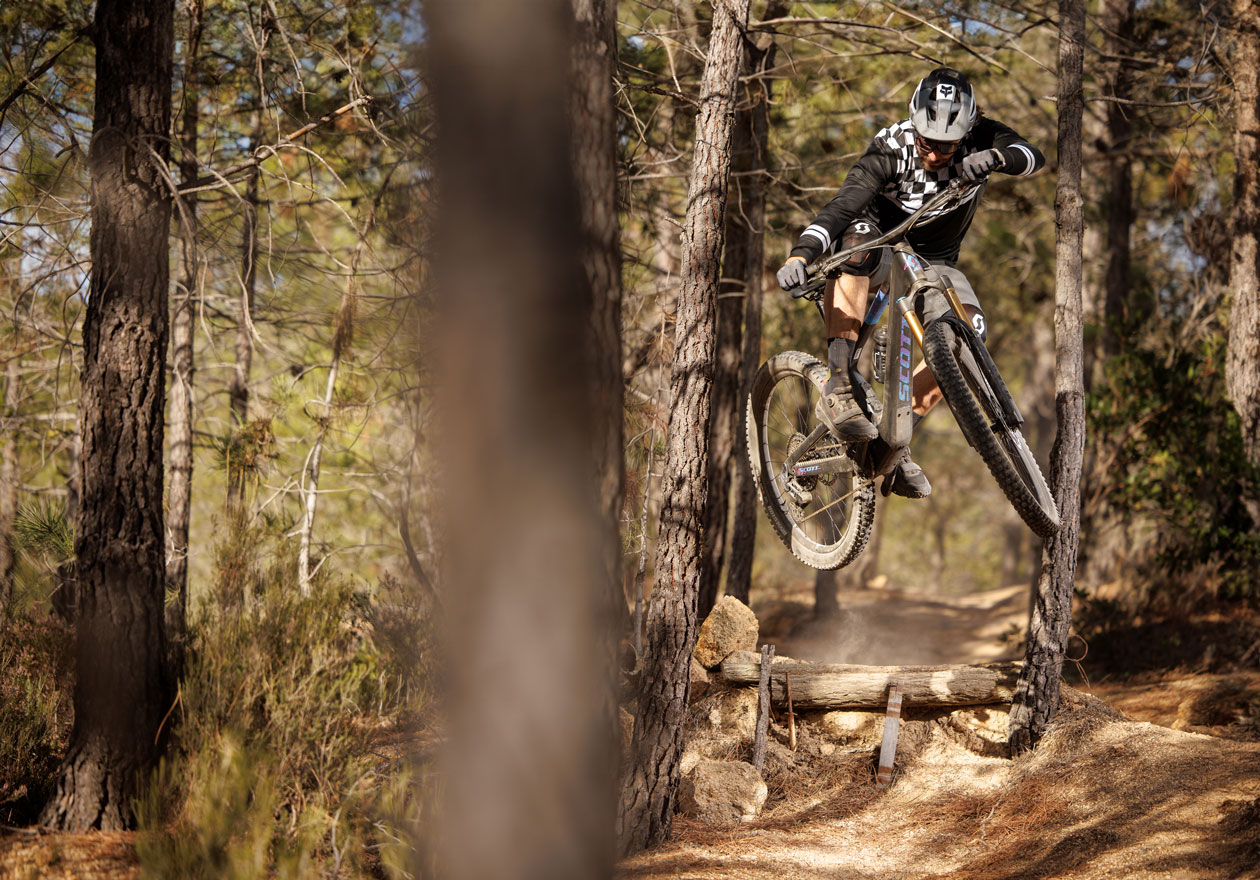
FINISH AND VALUE | $11k is a lot of money. Money that I don’t think I’ll ever spend on a bike for myself. Undoubtable are the efforts that Scott’s engineering team have put into designing the Voltage eRide though. Its finish is excellent, and the attention to detail is as good as it gets. That’ll go some way to justifying the hefty price tag for riders with deep enough pockets, but a GX level drivetrain may sting a little, even if it does work every bit as well as the more expensive levels. Everything else is suitably high quality.
Dropping to the 910 and 920 builds, spec quality takes a big hit, but prices are considerably lower to match. I’d have a hard time choosing a build spec that satisfied my demands for performance and desire for value, personally. A “905” TUNED build with Performance Elite suspension and alloy cockpit and wheels would be my dream.
The Wolf’s Last Word
It’s safe to say that the Scott Voltage eRide is a sweet machine for a trail to all mountain eBiker looking for a natural feeling assistance and mountain bike feeling descending. Especially if you’re in the slightly lower weight camp, preventing the motor power or chassis stiffness concerns materializing. Quality, attention to detail and integration on the Voltage eRide are exceptional, and for the right rider I think it would be a hell of a machine. ![]()
Price: $10,999/£10,999
Website: Scott-sports.com
LEAVE A COMMENT, WIN FREE SWAG!
Want to win some free schwag? Leave a comment and vote up the most thoughtful comments and each month we’ll pick a winner. The person with the smartest and most helpful replies will earn some sweet new gear. Join the Pack and get the latest news and read the latest reviews on the top mountain and electric mountain bikes.

